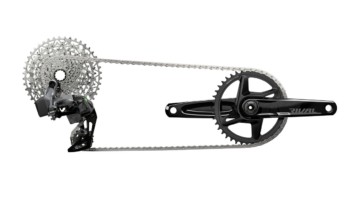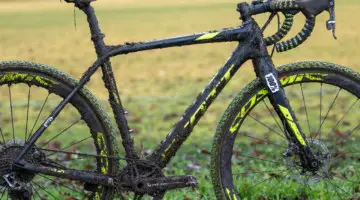There are plenty of reasons to change up your drivetrain range this time of year. For many, it’s about gravel races, where distances are much longer than cyclocross races often with plenty of climbing to boot. Similarly, there are adventure rides to be taken and even light bikepacking trips to take, all of which may necessitate lower gears.
It’s also the off season! So there’s generally less need for high intensity work in taller gears. It’s a great time to be spinning lower gears and enjoying longer rides that are easier on the legs and more social.
While the proliferation of 1x drivetrains is great for cyclocross racing, adding reliability, simplicity and often good weight savings, the limits at the high and low end of the gear range means less viability for other types of riding.
The need to update a cyclocross drivetrain for use on other rides especially makes sense for the many of us that are in the one-bike-to-rule-them all camp. Short of having separate cyclocross and gravel racing bikes, or ‘cross and bikepacking bikes, a drivetrain modification makes sense.
But you don’t have to turn your need for more gears into a massive, expensive project, unless you want to.
Going Lower With 1x
For riders with 1x setups looking for lower gears there are some easy, great options.
First, and perhaps obviously, you can reduce your front chainring size. SRAM’s X-Sync for 110mm BCD cranksets gets as small as 38t, so if you’re running a 42t, the most common size for cyclocross, you can get a 10% lower gear just with a quick change of your front ring. Other companies such as Wolf Tooth, Absolute Black and Race Face all offer 110mm BCD wide/narrow chainrings as small as 34t. If you don’t need a really tall gear, and getting over the hills is a priority, you can go small up front pretty easily with a new ring, and likely, a shortened chain.
Cassette Options for 1x
The second thing you can try is to change your cassette. If you’re running a cassette for ‘cross racing that’s 11-28, ditch it for an 11-32 for starters. Of course, you’ll likely want to go with an even wider gear range cassette, but before you try that there are things to consider.
Although SRAM has just announced a 12-speed, XD cassette for its new mountain bike group, its 10-42 XD driver cassettes, and the newly-announced Apex 11-42 cassettes which fit on a standard 11-speed Shimano/SRAM freehub, and along with Shimano’s 11-40 and 11-42 cassettes, are all wide-range options for the 1x cyclist.
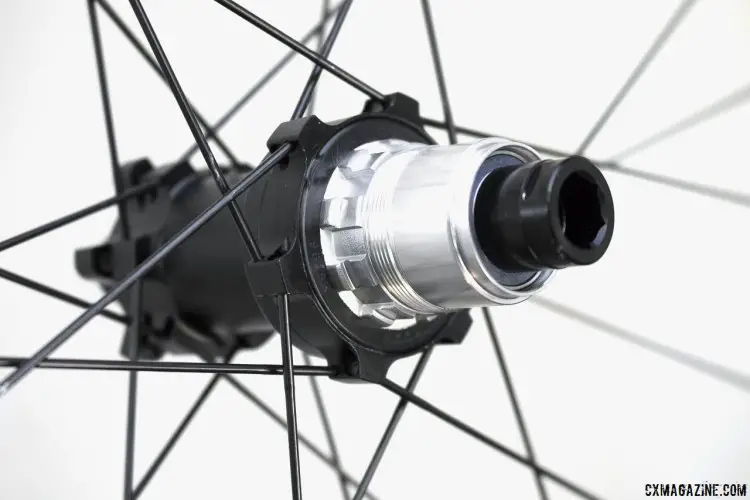
But one example: FSA SL-K carbon 29er/cyclocross wheels offer and XD driver option, which is useful for adding range to your 1x bike for gravel, especially with SRAM’s new long-cage Rival rear derailleur. © Cyclocross Magazine
You can also check to see if you can get an XD driver for your existing wheelset. If so, then all you need is the XD cassette, which is still not cheap. There are options from e*thirteen and of course, SRAM. If you go this route, SRAM encourages a long-cage Force, Rival or Apex clutch-based derailleur for XD cassettes. With Shimano you’ll have to be more creative if you want to run a clutch-based rear derailleur (more on this later). We’ve been able to push the medium cage derailleur to work with an XD 10-42 cassette, but your mileage may vary.
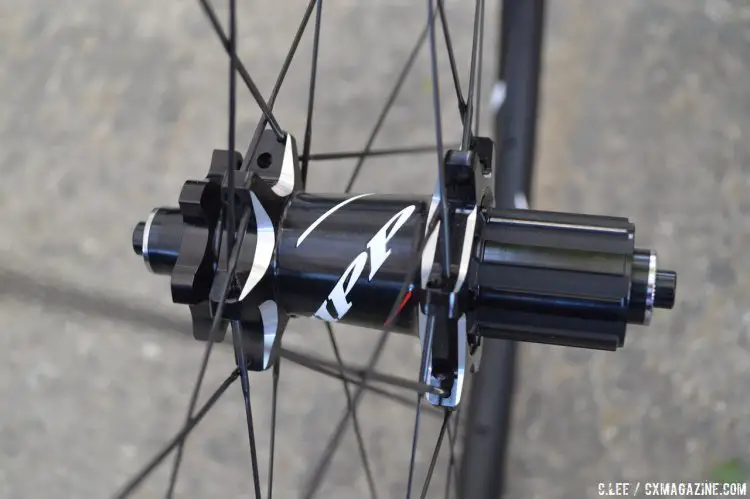
Many wheels are adaptable to wider-range cassettes. Here the cassette body on this Zipp hub can be exchanged with an XD Driver to employ SRAM’s larger cassette. © Clifford Lee/Cyclocross Magazine
Adapting your existing cassette may also be an option. Wolf Tooth and others offer a 40 or 42t big rear cog that can replace one of the smaller cogs of your cassette for 10-speed and 11-speed options. Your shifting might suffer a bit, but it’s a cheaper way than buying a new cassette.
1x Derailleur Choices
The third thing to consider is, what derailleur?
A wider-range cassette that offers a larger maximum cog will push your current derailleur’s limits. Some argue current capacity and maximum tooth limits stated by component manufacturers are based on outdated derailleur hanger geometry, allowing you to go bigger in terms of your maximum cog size out back. We have pushed short cage road Di2 derailleurs to work fine with 11-36 cassettes (and double chainrings), and used SRAM Force 1 medium cage derailleurs with 10-42 cassettes. This may or may not work for you and your bike, and any bit of mud could be disastrous when the derailleur pulley is so close to the cassette. To attempt, you likely will need to lengthen your chain, and adjust or reverse your B-screw.
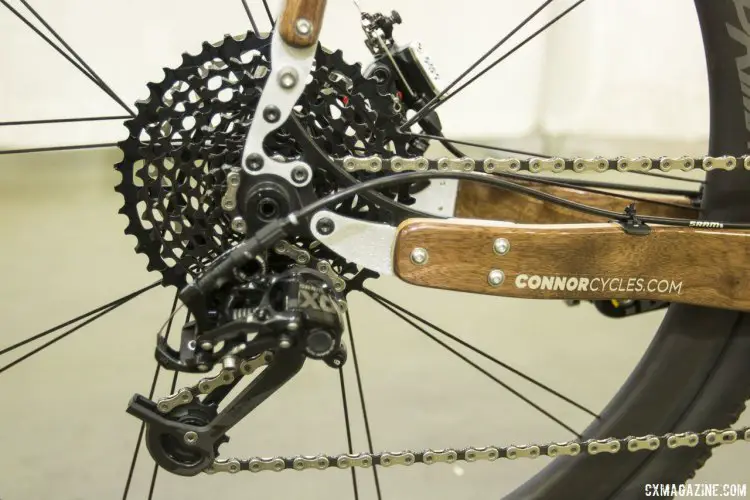
Chris Connor from Connor Wood Bicycles did some playing with SRAM components for this customer’s bike, and managed to pair an X0 rear derailleur with an XD 10-42 11-speed cassette and Force 11-speed road shifter. NAHBS 2015. © Cyclocross Magazine
We’ve seen others, like this Connor from NAHBS 2015, use SRAM 10-speed clutch based mountain bike rear derailleurs (X7, X9, X0) with 11-speed road shifters and an XD cassette. These derailleur options are more affordable options if a clutch-based derailleur, not 11-speeds, is your top priority. However, double check your cable routing geometry, as SRAM’s mountain bike rear derailleurs expect the cable to come from the seatstay and may not be compatible with chainstay-mounted cable-housing.
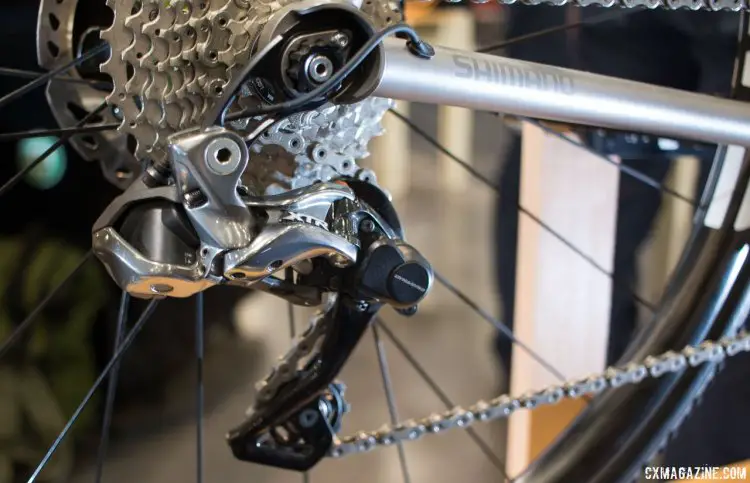
A custom Direct Mount-specific hanger and XTR Di2/Dura-Ace/R785 levers drivetrain are some nice touches that separate this XT1 from production cyclocross bikes. The right STI shifter handles both up and down shifts, while the left shifter also allows downshifts. NAHBS 2016. © Cyclocross Magazine
Running Di2 and want to go 1x with a wide-range cassette and a clutch-based rear derailleur? Arguably this is easier than with a mechanical shifter and derailleur, as there’s no worry about “cable pull per shift.” You can pair an XTR rear derailleur with Di2 shifters, and set up both shifters to operate the derailleur like SRAM eTAP to downshift on the left and upshift on the right, or operate normally with just a right shifter. Or pretty much any other permutation you can come up with, as seen on this Mosaic at NAHBS 2016.
Innovative Options
There are less common, perhaps more innovative options to consider too for the 1x rider.
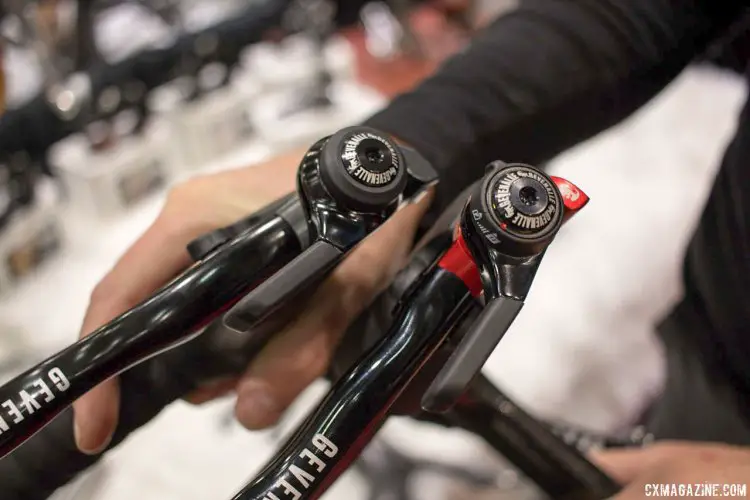
Want to run 1x with a Shimano mountain bike derailleur? 2x with a Shimano road or Gevenalle rear derailleur? Gevenalle has reliable shifter options for you. NAHBS 2016. © Cyclocross Magazine
Gevenalle offers a drop bar shifter system that lets you use Shimano’s Dyna-Sys 10 and 11-speed mountain bike clutch derailleurs. There’s also the Lindarets and Wolf Tooth Tanpan cable pull amplifier that will allow riders to run Shimano drop bar shifters and MTB derailleurs.
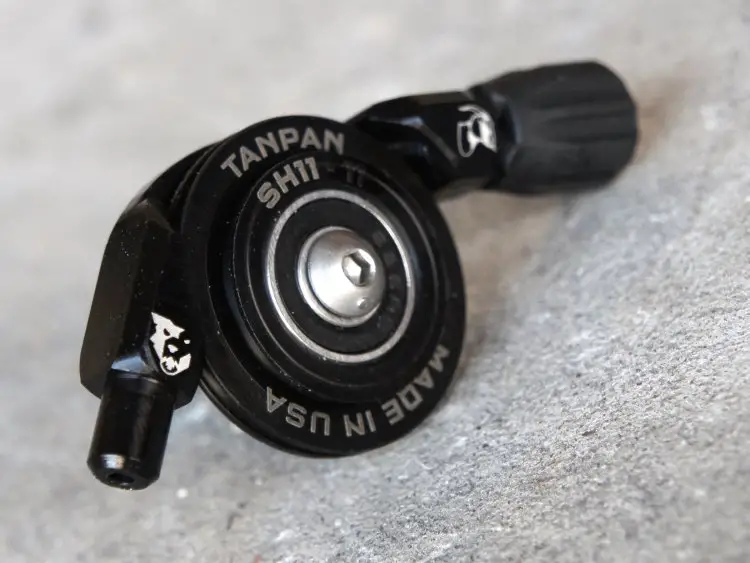
The Lindarets + Wolf Tooth Tanpan is a cable pull amplifier that lets you run Shimano drop bar shifters with MTB rear derailleurs, which offer lower gearing. Photo courtesy: Lindarets.
Or, you can get creative and drill out your Dyna-Sys mountain bike derailleur for a new cable clamp position, putting it closer to the derailleur body to reduce cable pull.
Options abound for going low when running 1x.
Stay tuned for part 2, where we look at 2x drivetrains and more.


























